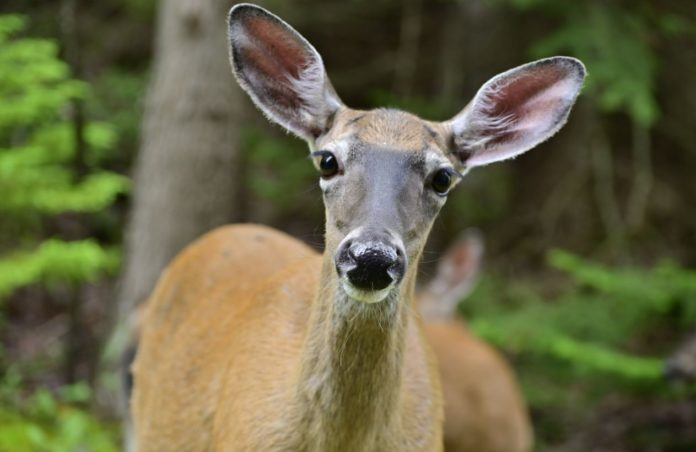About 35% of 360 white-tailed deer(Odocoileus virginianus) test positive for COVID-19 in 6 Northeast Ohio locations, researchers say.
These deer have received the virus from at least three human lineages, according to specialists, and they may be passing it on to one another. While there is no evidence that deer may now transmit the virus to humans, the virus could change while moving between deer, making the animals – as well as other wildlife hosts.
According to the research team, at least three strains of the virus that causes COVID-19 have been found in free-ranging white-tailed deer in six Northeast Ohio areas.
In the past, research led by the U.S. Department of Agriculture had found evidence of antibodies in wild deer, which was a good sign.
In this paper, published on Dec. 23 in Nature, researchers describe the first report of active COVID-19 infection in white-tailed deer, which was supported by the growth of viral isolates in the laboratory, indicating that researchers had recovered viable samples of the SARS-CoV-2 virus rather than only genetic traces of the virus.
Based on genomic sequencing of samples obtained between January and March 2021, researchers discovered that the SARS-CoV-2 virus variants infecting wild deer corresponded to strains of the virus that had been predominant in Ohio COVID-19 patients at the time of the samples’ collection.
The deer samples were collected before the Delta variant became common, and the Delta variant was not found in these deer. The team is analyzing more samples to see if there are any new mutations or older ones, which would indicate that the virus is able to establish itself and thrive in this species.
Andrew Bowman, an associate professor of veterinary preventive medicine at The Ohio State University and the paper’s principal author, said the study “leads toward the idea that we might actually have established a new maintenance host outside humans.”
“Based on evidence from other studies, we knew they were being exposed in the wild and that in the lab we could infect them and the virus could transmit from deer to deer. Here, we’re saying that in the wild, they are infected,” Bowman added.
“And if they can maintain it, we have a new potential source of SARS-CoV-2 coming in to humans. That would mean that beyond tracking what’s in people, we’ll need to know what’s in the deer, too.
“It could complicate future mitigation and control plans for COVID-19.”
Many questions remain, including how the deer became infected, whether the virus may infect humans and other species, how the virus functions in animals’ bodies, and whether the infection is temporary or long-term.
In nine northeast Ohio locales, the research team collected nasal swabs from 360 white-tailed deer. There were at least three separate strains of the virus found in 129 (35.8%) of the deer examined by scientists using PCR testing.
The study found that the B.1.2 viruses that were prevalent in Ohio in the early months of 2021 had spread to deer populations in numerous other states.
“The working theory based on our sequences is that humans are giving it to deer, and apparently we gave it to them several times,” said Bowman.
“We have evidence of six different viral introductions into those deer populations. It’s not that a single population got it once and it spread.”
A total of 18 sampling dates were collected from each site, ranging from one to three times. Infections were found to be spread throughout the nine sites in a range of 13.5% to 70%, with the highest infection rates found in four locations that were surrounded by denser population centers.
A viral reservoir of SARS-CoV-2 in white-tailed deer could lead to one of two consequences, according to Bowman. The virus may mutate in deer, making it easier for new strains to spread to other species, including people. Alternatively, the virus may remain unmutated in deer while evolving in humans, returning to humans when humans no longer have immunity to the strains infecting deer.
One of the many unanswered mysteries surrounding these findings is how transmission began in these deer and whether it may occur between species. An environmental channel, such as drinking contaminated water, was hypothesized by the research team as a possible route of infection for white-tailed deer. The virus can be found in human feces and wastewater, according to studies.
Deer used in this study were part of a program to reduce the population, and as a result, do not pose a transmission risk, according to authors.
Despite the fact that there are an estimated 600,000 white-tailed deer in Ohio and 30 million in the United States, Bowman claims that this sampling concentrated on areas near significant human populations and is not representative of all free-ranging deer.
Source: 10.1038/s41586-021-04353-x
You were reading: Oh deer! COVID-19 infection detected in about 35% of Northeast Ohio deer
